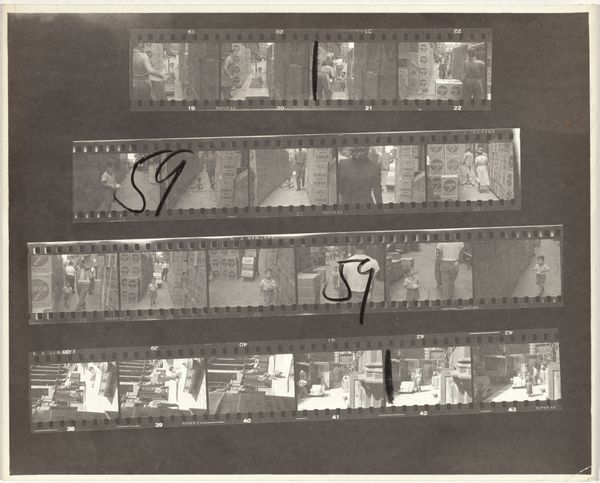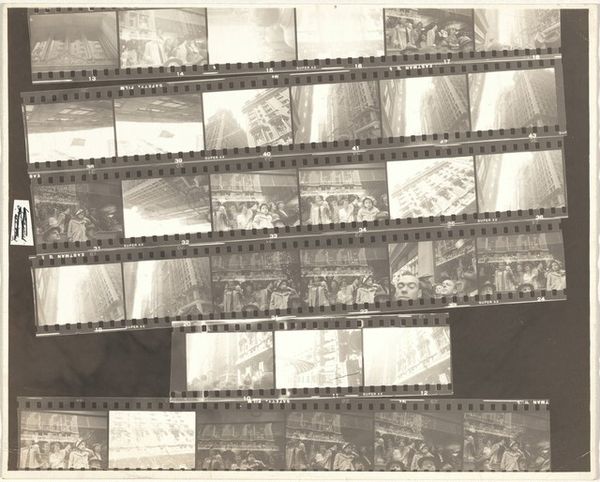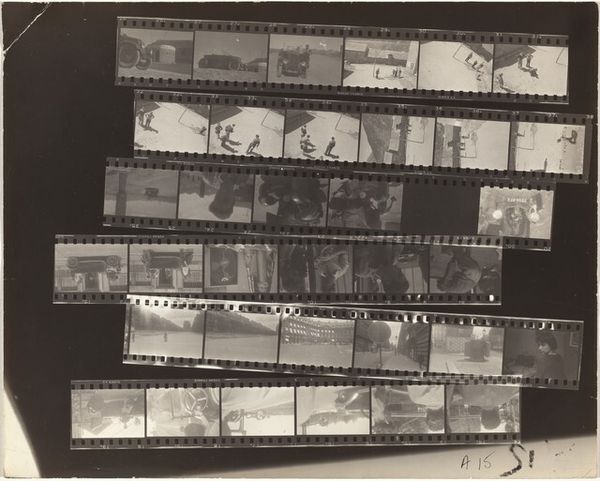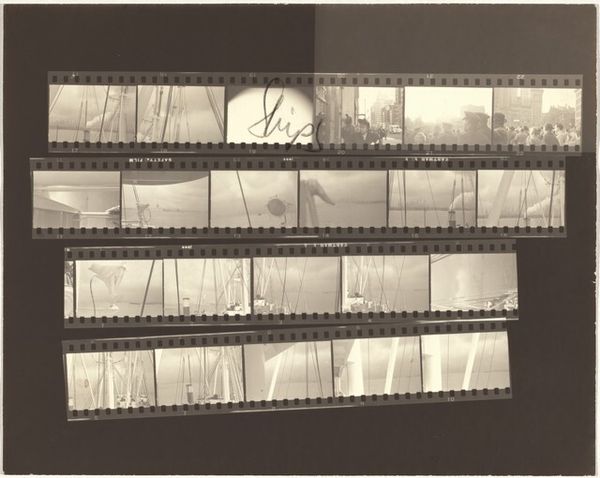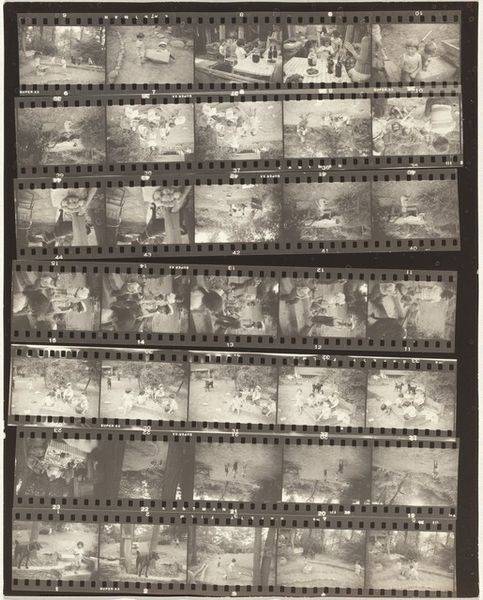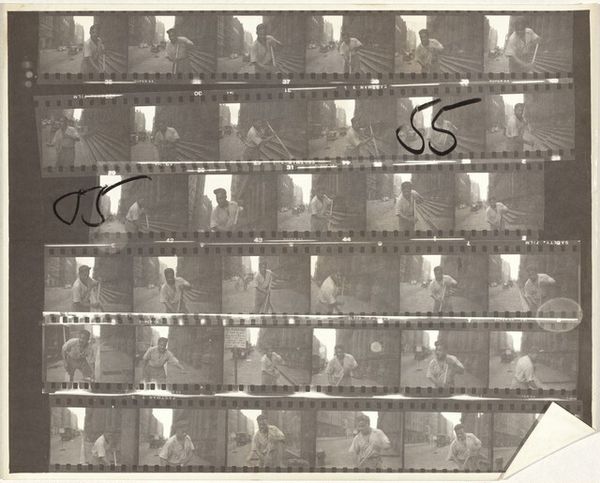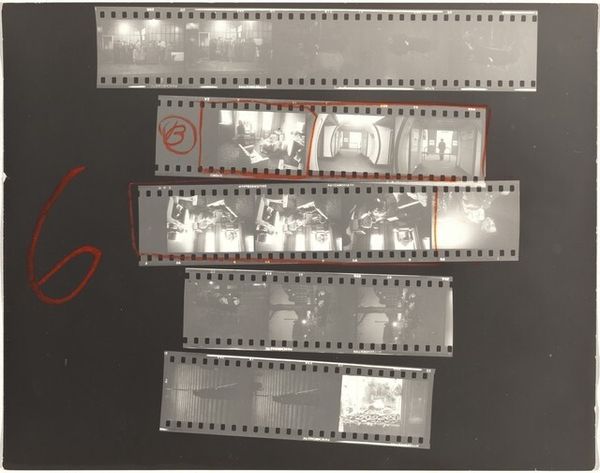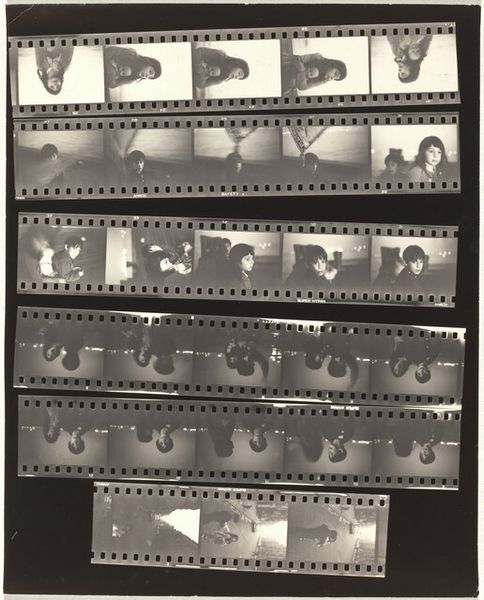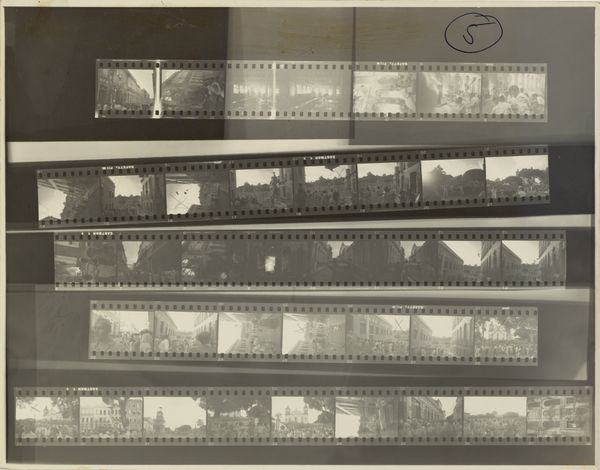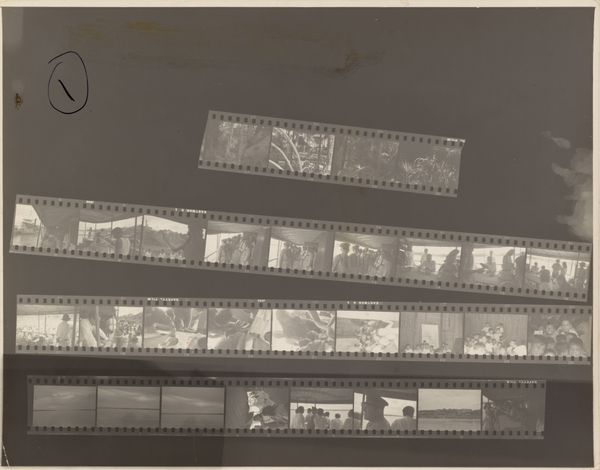
photography, gelatin-silver-print
#
portrait
#
archive photography
#
photography
#
historical photography
#
gelatin-silver-print
Dimensions: overall: 20.3 x 25.2 cm (8 x 9 15/16 in.)
Copyright: National Gallery of Art: CC0 1.0
Curator: Editor: So, we’re looking at Robert Frank's “Children and Family A3,” a gelatin-silver print from 1951. What strikes me is the almost voyeuristic glimpse into such private, quotidian moments... the vulnerability and the casualness of a family captured on film. It feels like a visual poem. What catches your eye? Curator: I'm immediately drawn to the raw quality of the film strip itself. There’s an immediacy in seeing the frames lined up, uncut, almost like stepping into Frank's darkroom. The stark contrast between the high-key images of the child sleeping in the top frames, and the dark tones in the ones beneath, is so dramatic! It's intimate and yet so removed…like peering into somebody else's dream. It is incredibly touching to get an impression of such fragility. I wonder what were the original intent behind these filmstrips and why would he choose this way to depict intimacy, especially when this choice seems so estranged. What do you make of the visual narrative woven within this contact sheet? Curator: That's a fascinating question, isn't it? The film strip form is integral here. It pushes back against a singular, decisive moment. The multiple frames offer us an exploration of time, variations on a theme – a slight shift in angle, the play of light, and shadow… It is a very evocative collection. And you know, the ‘A3’ suggests an organizational, even bureaucratic feel. A kind of detached approach against a deeply intimate topic! Did he ever intend to use those films as the "raw material" for another artwork or documentary purposes perhaps? Editor: That is a compelling paradox. To organize and classify something so incredibly ephemeral! Now that I see it, the whole object exudes the sentiment of nostalgia. Like, it preserves an almost untouchable memory to be consumed years later by complete strangers, such as us! What can be inferred from the way in which Frank approached photography that might be relatable today? Curator: Frank really pioneered a gritty, immediate style. He captured the essence of everyday life, imperfections and all. That search for authenticity still resonates today when everyone carries a high-quality camera in their pockets. What can be considered authentic? In a time in which photography feels so ubiquitous, how can we rediscover and emphasize honesty in what we capture? Editor: That is certainly something to consider in today’s digital age, where we have gotten into the habit of perceiving every captured frame of life in an instant, just as if looking at Robert Frank's unedited film strips. The more things change, the more they stay the same, huh? Curator: Indeed! Food for thought.
Comments
No comments
Be the first to comment and join the conversation on the ultimate creative platform.
